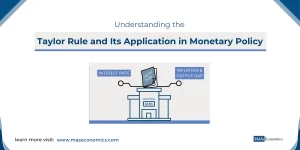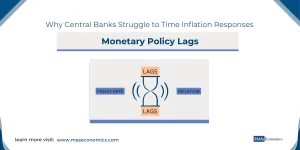The relationship between fiscal policy and central bank balance sheets has evolved significantly since the Global Financial Crisis and the COVID-19 pandemic. Central banks have expanded their balance sheets at unprecedented levels to support fiscal measures, stabilize economies, and ensure effective rescue efforts.
The intersection of fiscal and monetary policies reveals the role of central banks in supporting fiscal spending, the impact on economic stability, and the challenges faced within this new landscape
The Post-Crisis Shift in Central Bank Roles
From Crisis Response to Economic Stabilization
Central banks have always played a crucial role in stabilizing economies during times of crisis. Traditionally, their mandate revolved around ensuring price stability and controlling inflation. However, the 2008 Global Financial Crisis and, more recently, the COVID-19 pandemic have redefined this role.
In response to these crises, central banks employed new and bold measures that went far beyond their usual remit:
Cutting Interest Rates to the Zero Lower Bound (ZLB)
By cutting interest rates to almost zero, central banks aimed to make borrowing cheaper for both governments and businesses. This move helped cushion economies from the sharp economic downturn.
Quantitative Easing (QE)
Central banks began purchasing government and corporate bonds on a large scale, not only to lower interest rates but also to ensure that governments could finance their rescue packages through the capital market at favorable terms.
Acting as the Lender of Last Resort
During times of financial stress, central banks acted as lenders of last resort, providing liquidity to struggling sectors via targeted credit interventions, ensuring economic stability even when commercial banks were hesitant to lend.
These measures helped economies recover from the GFC and the COVID-19 shock, yet they also raised questions about the future independence and neutrality of central banks.
Fiscal Policy’s Dependence on Central Banks
Expanding Balance Sheets
To finance the massive fiscal expenditures necessitated by the COVID-19 crisis, governments relied heavily on central bank support. In many countries, central banks expanded their balance sheets to buy up government bonds, thus directly funding fiscal initiatives.
This strategy, while highly effective in injecting liquidity into the economy, came with certain risks:
Inflationary Pressures
The surge in public spending, supported by central bank liquidity, has created concerns about potential inflation. By the end of 2022, inflation had risen dramatically, particularly in advanced economies such as the U.S. and Eurozone, where rates reached around 10%.
Increased Government Debt
Central banks’ intervention in debt markets facilitated unprecedented budget deficits. As seen in countries like the United States, the portfolio of government debt held by the central bank rose sharply, leading to questions about whether interest rates on government debt were still determined by the market or artificially suppressed.
Low Interest Rates and Fiscal Support
One of the significant shifts that have occurred is the prolonged period of low interest rates, which, in effect, has reduced the cost of borrowing for governments. While this has allowed governments to fund stimulus packages and infrastructure investments, it has also created vulnerabilities:
Increased Vulnerability to Rate Hikes
With interest rates kept artificially low, many governments have become reliant on cheap debt. Any future increase in interest rates, driven by inflation control needs, could result in a sudden rise in debt servicing costs.
Moral Hazard
The continued support of central banks may have inadvertently created a moral hazard, where governments rely on central bank support instead of addressing underlying structural issues within their economies.
Challenges to Central Bank Independence
The Rise of Fiscal Dominance
The past decade has seen a gradual erosion of central bank independence, with many central banks effectively becoming extensions of their respective fiscal authorities. This phenomenon, often referred to as fiscal dominance, describes a scenario where the central bank’s monetary policy is largely dictated by the government’s fiscal needs.
Political Pressures
The unprecedented collaboration between central banks and fiscal authorities during crises has blurred the lines between monetary and fiscal policy. This has led to increased political pressure on central banks to maintain low interest rates and provide direct support for government programs, undermining their autonomy.
Risks to Price Stability
Central bank independence has traditionally been seen as a cornerstone of ensuring price stability. By being subservient to fiscal needs, central banks may lose their focus on maintaining inflation targets, which could lead to sustained high inflation, as seen in the early 2020s.
The Long-Term Impact on Balance Sheets
Central bank balance sheets have expanded significantly due to the need to finance government spending and buy up assets to ensure liquidity. However, this expansion has led to several challenges:
Rising Bond Yields:
The extensive purchase of government bonds by central banks, especially during periods of fiscal distress, raises concerns about market distortions. When central banks hold a substantial portion of government debt, the natural price discovery mechanism of bond markets may be compromised.
Sovereign Debt Concerns
There is also the challenge of what happens to these expanded balance sheets once fiscal support is scaled back. If central banks start unwinding these positions by selling off bonds, there could be a sharp increase in yields, negatively impacting government borrowing costs.
The Olsonian Setting and Central Bank Strategy
Central Banks in an Olsonian Setting
The concept of Olsonian sclerosis—named after economist Mancur Olson—suggests that as nations become wealthier and more complex, vested interests can prevent necessary reforms, leading to economic stagnation. Central banks’ current expanded roles can be seen through this lens, where central banks are being used to maintain the status quo instead of pushing for the tough structural changes needed for long-term economic health.
Delayed Structural Reforms
Governments have used central bank balance sheets to delay difficult fiscal and structural reforms. Instead of tackling fundamental problems like labor market inefficiencies or tax reforms, governments have relied on central bank intervention to prop up economies.
Risk of a Zombie Economy
With interest rates kept artificially low and continued central bank support for government programs, there is a risk of zombification—where weak companies that would have otherwise exited the market continue to survive, leading to inefficient allocation of resources and slower productivity growth.
Navigating the Path Forward
A Balanced Approach to Fiscal and Monetary Policy
The post-crisis era demands a careful recalibration of the balance between fiscal and monetary policy. While central bank interventions have been critical in managing economic shocks, the long-term consequences of continued fiscal dependence must be addressed:
Returning to Rules-Based Monetary Policy
There needs to be a shift back towards a rules-based monetary policy, where central banks regain their independence and focus on maintaining price stability. This will help ensure that inflation expectations are kept in check, providing a stable economic environment conducive to growth.
Gradual Unwinding of Balance Sheets
To prevent sudden disruptions in bond markets, central banks need a well-communicated and gradual approach to reducing their balance sheet size. This could involve targeting a reduction in holdings of government bonds over an extended period to allow markets to adjust smoothly.
Addressing Fiscal Challenges
Governments need to take on the responsibility of implementing structural reforms and reducing fiscal deficits. This involves measures such as improving tax collection, reducing inefficiencies in public spending, and investing in growth-enhancing infrastructure projects without relying on central bank support.
Reconsidering Central Bank Independence
To restore central bank independence, it is crucial to redefine the roles and responsibilities of central banks and fiscal authorities clearly:
Legislative Clarity
Legislative action may be necessary to re-establish the limits of central bank interventions, particularly concerning the purchase of government debt. Setting clear boundaries can help ensure that central banks are not compelled to act as permanent financiers of government deficits.
Strengthening Governance
Improving the governance of central banks, including stronger accountability frameworks and transparency measures, can also reinforce their independence. This would involve setting explicit inflation targets and requiring central banks to justify deviations from these targets in front of parliamentary committees or other oversight bodies.
Conclusion
The relationship between fiscal policy and central bank balance sheets has fundamentally changed how economies are managed post-crisis. While central bank support has helped stabilize economies during turbulent times, it has also blurred the lines between fiscal and monetary responsibilities.
To achieve sustainable growth, restoring central bank independence and encouraging necessary structural reforms will be crucial. A balanced approach, with clearly defined roles for fiscal and monetary authorities and minimal market distortion from central bank interventions, will be key to addressing post-crisis challenges.
FAQs:
What is the role of central banks in supporting fiscal policy?
Central banks support fiscal policy by purchasing government bonds and keeping interest rates low, making it easier for governments to fund spending initiatives, especially during crises.
How has central bank independence been impacted by recent economic crises?
In recent years, central banks have increasingly acted to meet fiscal needs, leading to concerns about fiscal dominance, where government spending priorities influence monetary policy, potentially compromising central bank independence.
What are the main risks associated with expanded central bank balance sheets?
Expanded balance sheets create risks like inflationary pressures, potential market distortions, and challenges in unwinding these assets without causing sudden increases in bond yields or borrowing costs.
Why is inflation a concern with current central bank and fiscal dynamics?
Increased government spending supported by central banks raises the money supply, potentially leading to inflation, especially when economies reach full capacity or supply constraints arise.
How can central banks navigate the challenges of fiscal dominance?
To navigate these challenges, central banks may focus on gradual balance sheet reduction, strengthening accountability measures, and re-establishing independence through clear legislative boundaries and transparent policy goals.
Thanks for reading! Share this with friends and spread the knowledge if you found it helpful.
Happy learning with MASEconomics




